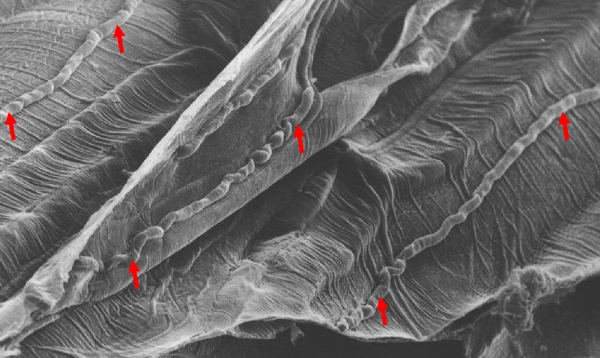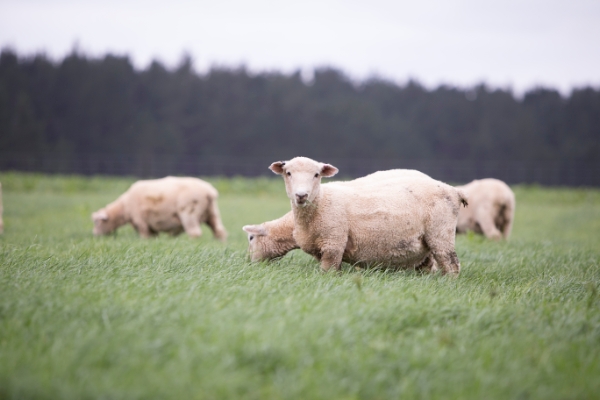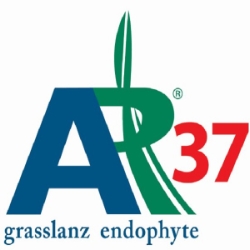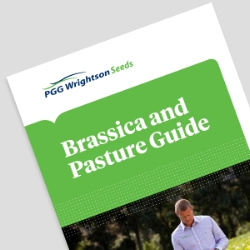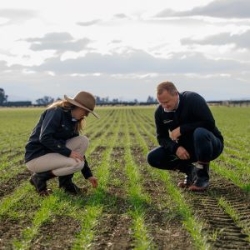Endophytes
Enhance the yield and persistence of grass
What is an endophyte?
An endophyte is a fungus found naturally in many grass species, including ryegrass. It provides the plant with protection from insects, and in return the plant provides the endophyte a place to live and reproduce. If Argentine Stem Weevil or Black Beetle Adults are present at sowing, an appropriate seed treatment is recommended to improve insect control during establishment. These ratings are based in part on glasshouse studies where test plants are 100% infected with endophyte, whereas commercial seed must meet minimum standards of 70% of seeds infected.
Why is it important?
Endophyte enhances the yield and persistence of the grass, because the endophyte produces a number of compounds that are toxic to various insects, and other grass pests. However, endophyte can also cause stock health problems, such as ryegrass staggers. Several novel endophytes that are less toxic to stock have been discovered, and these are currently available in a range of ryegrass and tall fescue cultivars. When used correctly, these novel endophytes can improve animal performance, and/or provide improved grass yield and persistence.
Major endophyte compounds in ryegrass
- Peramine - a natural insecticide that controls some important insect pests; non-toxic to stock.
- Lolitrem B - may provide some insect protection; causes summer ryegrass staggers.
- Ergovaline - a compound that in moderate to high amounts could reduce animal performance, but provides protection against some important pests.
- Epoxy-janthitrems- a unique alkaloid thought to have a role in protection against insects.
- Epoxy-janthitrems may cause ryegrass staggers.
Types of endophytes
AR37 |
Ryegrass with AR37 endophyte provides the best insect control in ryegrass of all commercially available endophytes, with resistance against Argentine Stem Weevil, Pasture Mealy Bug, Root Aphid, Black Beetle and Porina. AR37 can cause ryegrass staggers. AR37 endophyte is not suitable for deer or horse pastures. |
AR1 |
Ryegrass with AR1 endophyte provides moderate insect control, but is safe for grazing stock. AR1 pastures protect against Argentine Stem Weevil and Pasture Mealy Bug. Care is needed in areas with high Black Beetle numbers (Northern North Island) as AR1 only gives moderate resistance to this pest. AR1 pastures are susceptible to Root Aphid. |
MaxP® |
MaxP® is a novel tall fescue endophyte that improves the ability of tall fescue pastures to handle pest attack and moisture stress. Unlike ryegrass endophyte, MaxP endophyte produces a loline compound. This compound along with peramine is likely to be a key factor in providing protection against Argentine Stem Weevil, Black Beetle, Pasture Mealy Bug and Root Aphid. MaxP can improve the drought tolerance of tall fescue. In areas where there are few insect pests and little moisture stress, MaxP may not be essential, but may still improve pasture production. |
Standard endophyte |
With the introduction of novel endophytes, this endophyte option is now outclassed. Stock grazing these pastures may suffer from ryegrass staggers and reduced animal performance during the warm part of the year. These effects may be reduced by adjusting summer/autumn grazing management. |
Without endophyte/low endophyte |
In areas with cooler summers and good rainfall or irrigation, (Westland, Southland, parts of Otago and some irrigated land in Canterbury), cultivars without endophyte, or with low levels of standard endophyte, can be used. Such pastures are animal safe, and will give very good animal performance. However, ryegrass without endophyte provides little or no protection against common insect pests. |
NEA2 |
Thought to provide insect protection similar to Endo5. NEA2 pastures contain low levels of Peramine and Ergovaline and very low levels of Lolitrem B. |
AR37 endophyte
YOUR KEY TO BETTER PASTURE PERSISTENCE AND PRODUCTIVITY.
AR37 endophyte, developed by AgResearch Grasslands and commercial partners, takes pasture pest resistance to a new level. AR37 provides resistance against five of the main pasture pests in New Zealand pastures (Argentine Stem Weevil, Pasture Mealy Bug, Root Aphid, Black Beetle and Porina. Note: In pastures with AR37 ryegrass, Porina can be present and feed on the other pasture mix components. Early field trial results have confirmed laboratory evidence of resistance of ryegrass with AR37 to Porina.
WHY AR37?
AR37 is the only novel endophyte that gives proven ryegrass protection against porina caterpillars.It has three stars on the insect control table (see www.ar37.co.nz) indicating that it provides Good control: AR37 markedly reduces insect damage under low to moderate insect pressure. Damage may still occur when insect pressure is high. Moderate pressure occurs at levels up to approximately 100 porina /m2 or 4 porina per standard spade. Pasture production is reduced when 20 - 40 porina /m2 are present. At this level they consume the equivalent amount of dry matter at 1 SU. Higher porina numbers cause plant deaths in unprotected pastures. At 100 porina/m2 and greater high to extreme pressure is exerted on the pasture which AR37 alone cannot protect against.
No endophyte prevents porina moths laying eggs in pasture. However caterpillars that hatch from eggs in an AR37 pasture will be killed if they eat AR37 infected grass. In mixed pastures other plants may provide a safe feed source and this means porina are often found at low levels in pastures based on AR37 ryegrass, but the endophyte is still working and will deter and poison the caterpillars. No other ryegrass endophyte provides this level of protection against porina.
Ryegrass with AR37 has better persistence; and yields on average 12% more drymatter nationally than the same cultivar with standard endophyte. AgResearch trials over three years in four locations produced an average of 12% more drymatter nationally from a ryegrass with AR37 compared to the same cultivar with standard endophyte.
AR37 endophyte is not suitable for deer or horse pastures.
MAXP® tall fescue endophyte
WHAT IS MAXP®?
MaxP® is a novel tall fescue endophyte that improves the ability of tall fescue pastures to handle pest attack and possibly moisture stress. MaxP® endophyte is available in Quantica tall fescue (refer to page 146). Tall fescue with MaxP® endophyte offers improved persistence compared with tall fescue without endophyte.
Unlike ryegrass endophyte, MaxP® endophyte produces loline compounds. These compounds, along with peramine, are likely to be a key factor in providing protection against Black Beetle and Root Aphid. MaxP® can improve the drought tolerance of tall fescue. In areas where there are few insect pests and little moisture stress, MaxP® may not be essential, but may still improve pasture production.
PERSISTENCE
The persistence of tall fescues with MaxP® endophyte has been very good, out-yielding perennial ryegrass three years after sowing and having considerably higher plant density than the same fescue without endophyte.
DRY MATTER PRODUCTION
Tall fescue cultivars with MaxP® endophyte have been tested throughout New Zealand since 1997. In areas with insect pests, trials consistently show significant yield and persistence advantages of tall fescues with MaxP® endophyte. In Kerikeri, Northland, MaxP® tall fescue produced 21-81% more dry matter per year than the same cultivar without endophyte. This benefit is more pronounced through late summer and autumn, when yield increases of up to 180% have been measured. Much of the increased performance is due to the resistance MaxP® provides against the destructive insects Black Beetle and Argentine Stem Weevil. These insects reduce the growth and persistence of tall fescue without endophyte.
AR37 and MaxP® endophytes are used under licence from Grasslanz Technology Limited.
AR37 and MaxP® endophytes are protected under the New Zealand Plant Variety Rights Act 1987.
The and logo are registered trademarks of and used under licence from Grasslanz Technology Limited.

